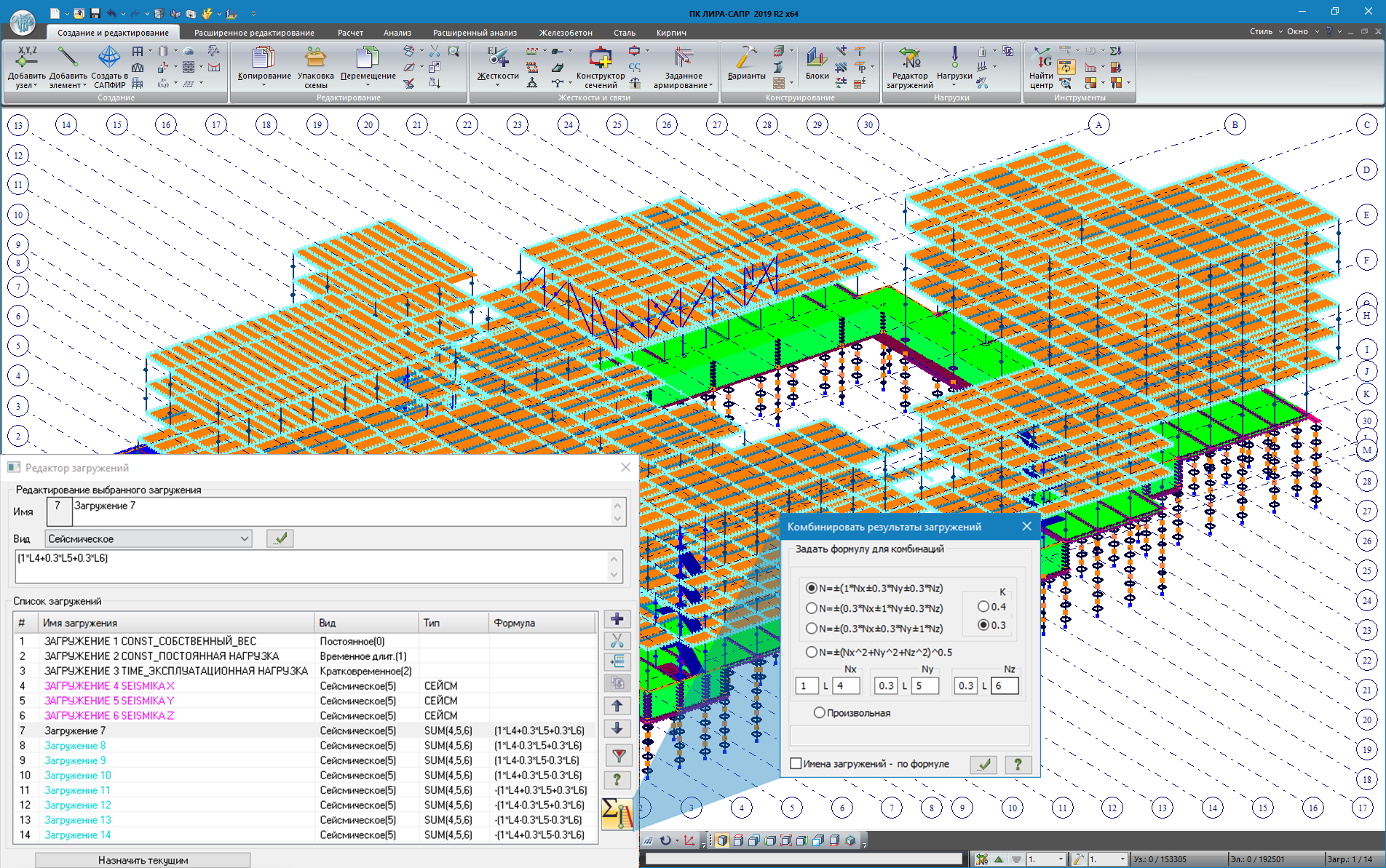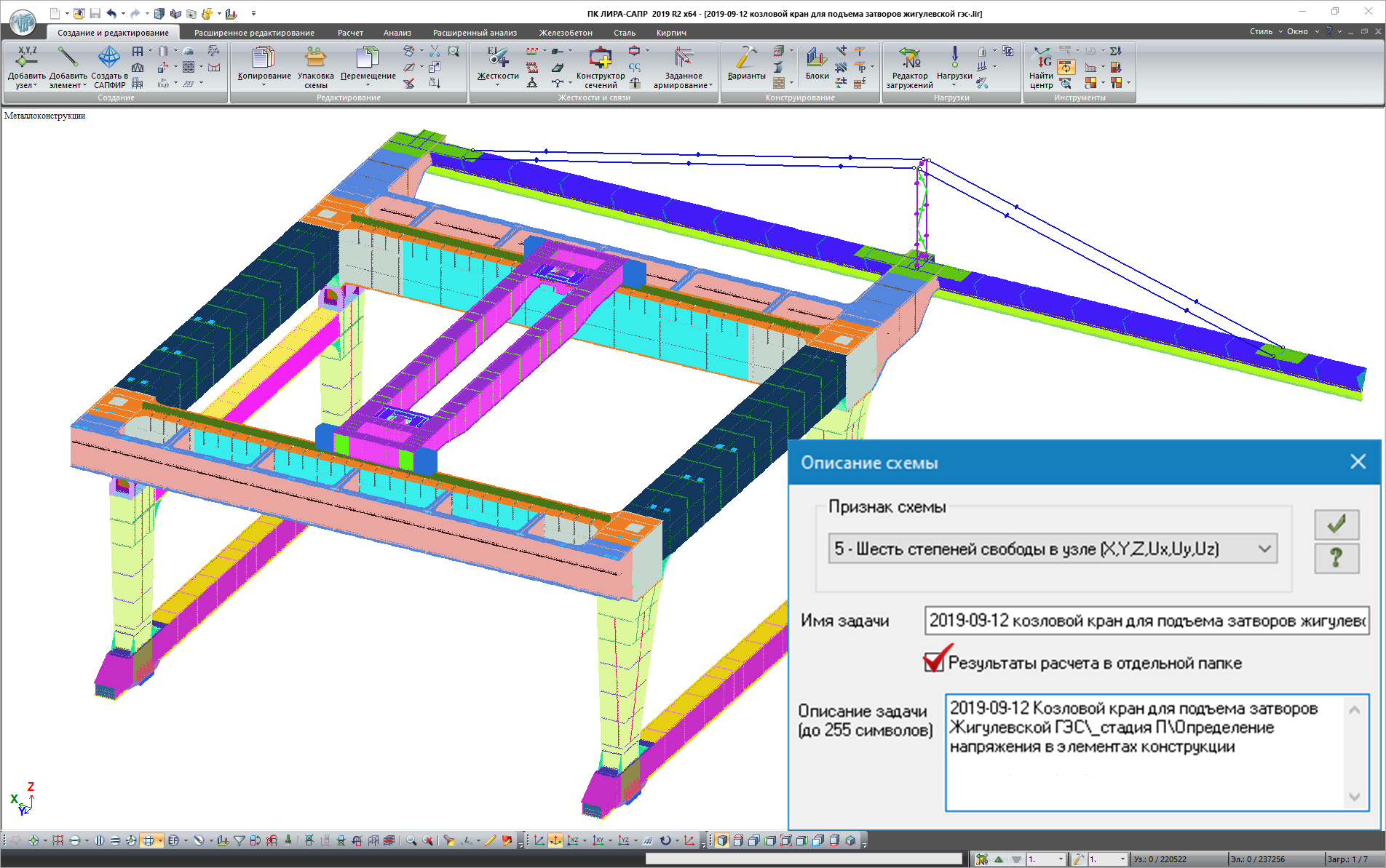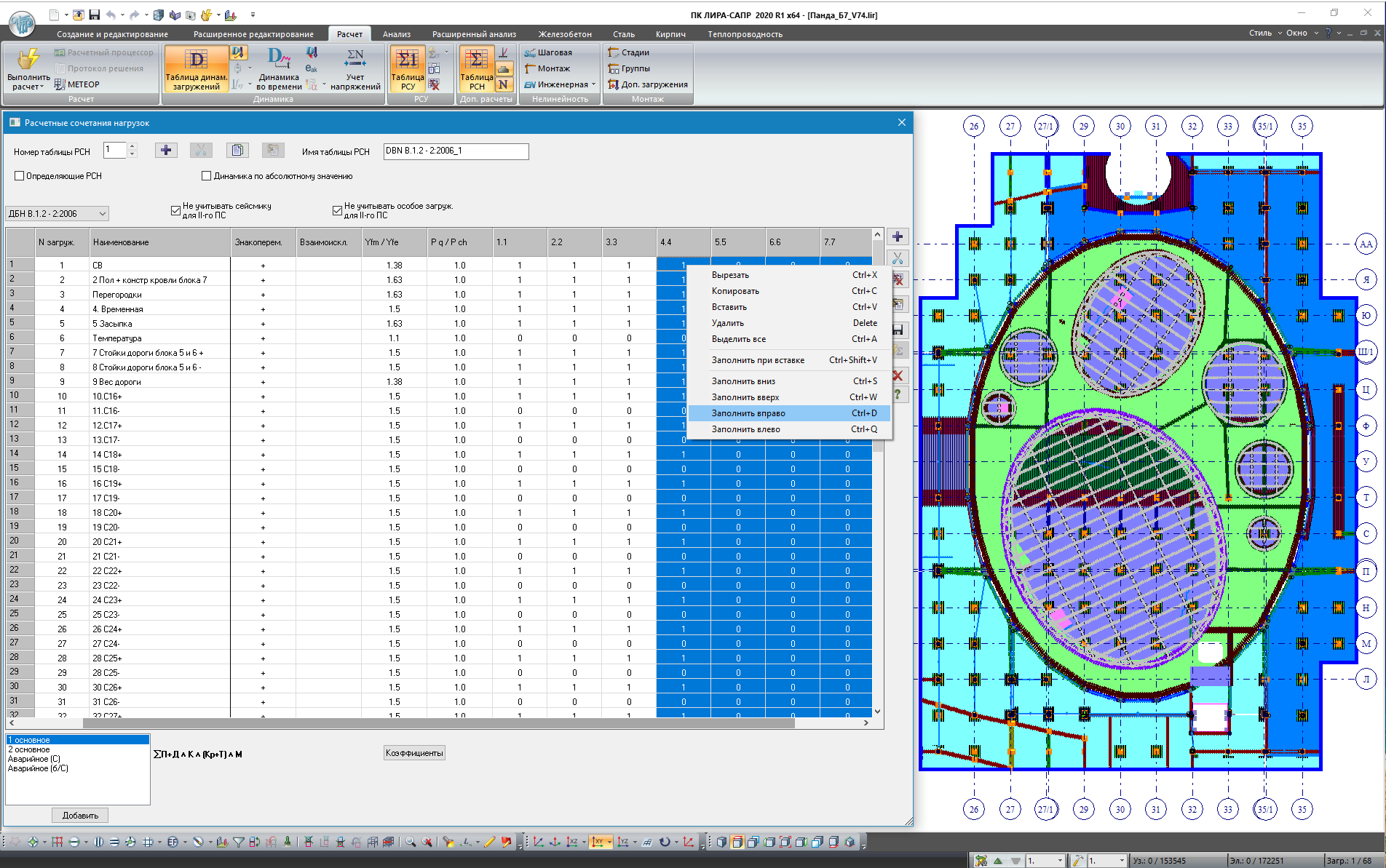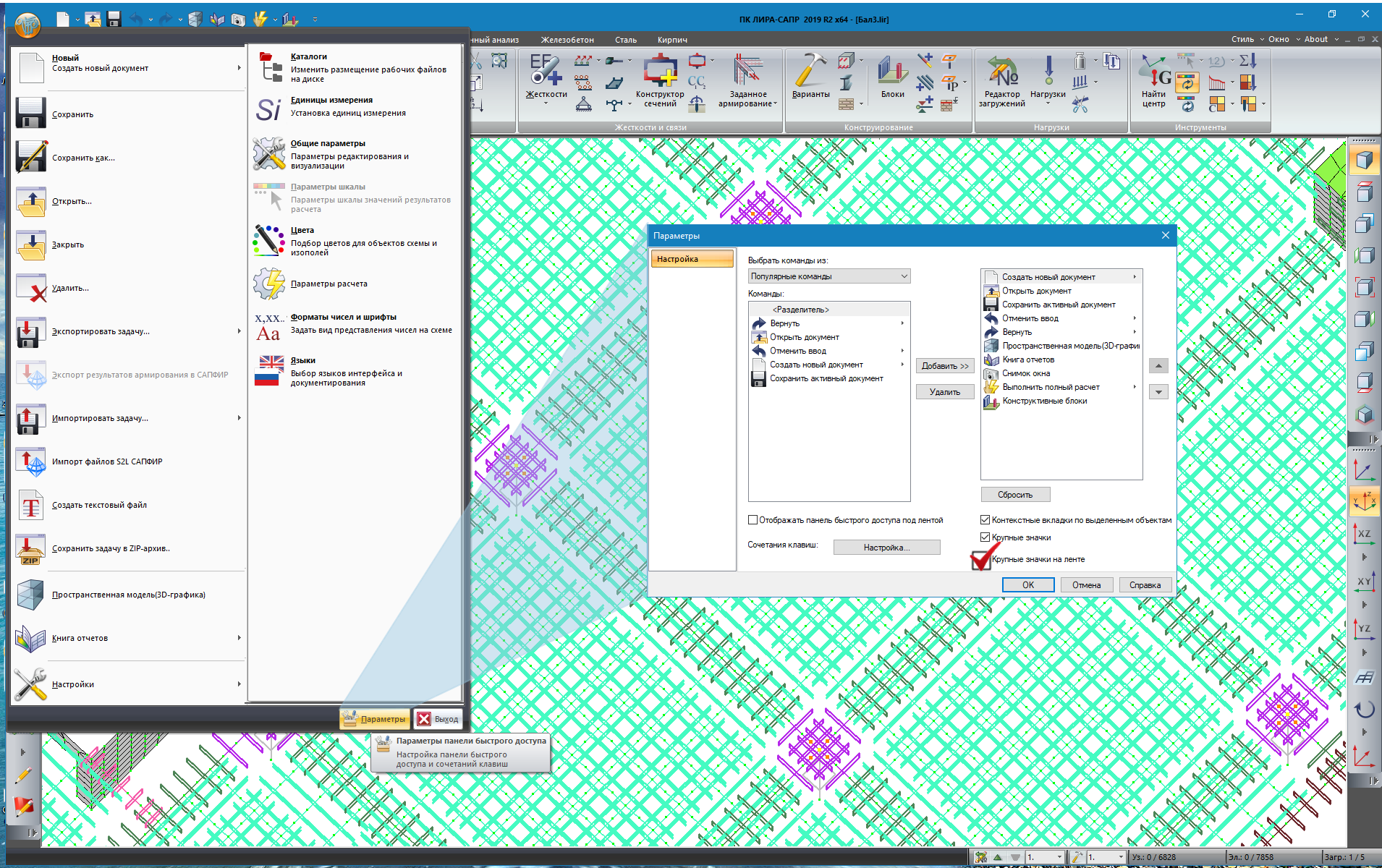LIRA-SAPR 2019 R2
The second release (R2) of LIRA-SAPR 2019 is available now. It also contains Update 1 and Update 2 to LIRA-SAPR 2019 R1.

October 21, 2019
The second release (R2) of LIRA-SAPR 2019 is available now. It also contains Update 1 and Update 2 to LIRA-SAPR 2019 R1.
-
New option to create new load cases as combination of results from analysis of arbitrary set of other load cases. To make such combination, in the Edit load cases dialog box, generate mnemonic formulas (where links to available load case numbers are used for components), define coefficients to these components and mathematical operations with them. Load cases created ‘by formula’ may be used in generating DCL/DCF and in design procedure as well. Such combination of results from different load cases is necessary, for example, due to requirement to consider multi-component earthquake loads in analysis by linear-spectral method and similar requirements in certain national building codes of the CIS countries and Europe (e.g. NP-031-01 ‘Design of earthquake-resistant nuclear power plants’, Eurocode 8 ‘Design of structures for earthquake resistance’, SP RK 2.03-30-2017 ‘Construction in seismic areas of Kazakhstan’).

- In LIRA-SAPR 2019 R1, the procedure for matrix decomposition (factorization) was considerable speeded up for Intel processors. In LIRA-SAPR 2019 R2, this option is provided for AMD processors as well.
- Extended list of available ‘Input tables’. The ‘Table of restraints’ and ‘Table of moduli of subgrade reaction’ are added.
- Modifications No.2 and No.3 to SP 24.13330.2011 ‘Pile foundations’ are supported.
- Allowed length for problem name length for name of *.lir file) is extended up to 200 characters if the ‘Output data in certain directory’ option is selected (see the Model type dialog box).

- For the integrated problems in ‘MODEL VARIATION’ system (that unites the output data from several design models with the same topology), generated by forces, it is allowed to create and edit user-defined DCF and DCL tables, create several design options, then recompute by the specified table of combinations and carry out design procedure.
- In ‘MODEL VARIATION’ system, generation of the summarized DCF table is clarified if the comma is defined as decimal symbol in Regional settings for Windows.
- Keyboard commands (such as DEL, CTRL+A, etc.) become available when you work with design model and some dialog boxes are active (for example, ‘Flags of drawing’, ‘PolyFilter’, ‘Edit load cases’, etc.).
- In the ‘Fire resistance of element’ dialog box, visualization of temperature distribution in the heated reinforcement is clarified in case of non-uniform heating of the RC section.
- For linear design models, in problems with time history analysis, it is allowed to define pre-history with additional load cases.
- When text file of the problem generated in MONOMAKH-SAPR is imported to LIRA-FEM program, data about defined RC materials is also imported.
- In dynamic analysis by response spectrum method (dynamic module 41), extended range of allowed values of transient coefficient for selected spectrum diagram.
- In some dialog boxes that use tables of input data, new option to fill in data automatically. New commands in the shortcut menu: ‘Fill down/up/right/left’ and ‘Fill and paste’. There are shortcut keys for these commands.

- Clarified algorithm for computation of ultimate overhangs for flanges in stiffness ribs for plates.
- New option to adjust the size for button on the ribbon (standard/large size).

- Corrected option to take account of the load factor in analysis of design options by forces.
- Corrected option to take account of the partial safety factor for reinforcement in earthquake load if analysis of reinforcement is carried out by forces and DCL.
- Corrected error in documentation system when screen copies were updated for mosaic plots of results with max/min values.


Comments